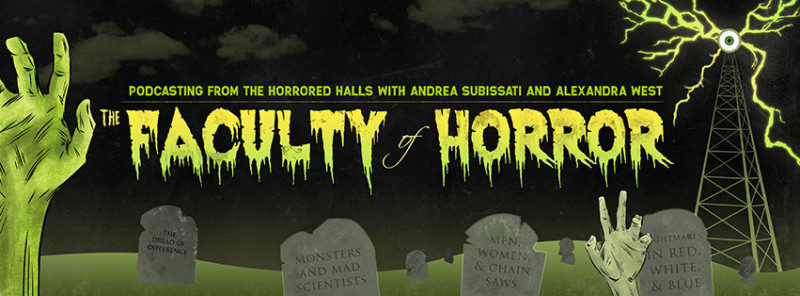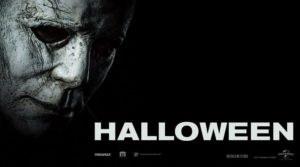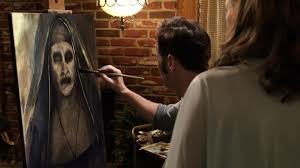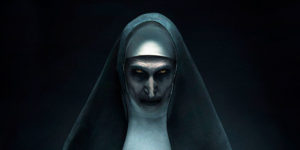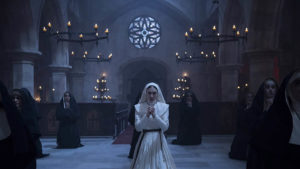The horror-western sub-genre has generally been a male dominated one with films like Bone Tomahawk (2015), Ravenous (1999), and From Dusk Till Dawn (1996). Emma Tammi’s new film The Wind reorients the narratives of the unknown American frontier in the 1800s and focuses on Lizzie (Caitlin Gerard) and her husband Isaac (Ashley Zukerman) as their very small, isolated world is interrupted by a new couple, Emma (Julia Goldani Tells) and Gideon (Dylan McTee) who move into the cabin a mile away from them and the strange occurrences which escalate as their relationship develops.
In her intro to its TIFF screening Tammi referenced how she and her team were inspired by tales of women in the American frontier who were driven made by the endless, burrowing sound of the wind across the prairies. This phenomenon also known as Prairie Madness or Prairie Fever occurred when families moved from bustling urban centres to the deafening quiet of the relatively uninhabited prairies. In The Wind, the film supposes that this madness is brought about by something real, or real in the minds of those affected. An interesting companion piece to Robert Eggers The Witch (2016), The Wind circles the notion of female isolation and expectations as only the women are affected while the men go about their business. The husbands are side characters who appear to cause concern or instability for Lizzie and Emma. As the women form a rather competitive relationship, their isolation becomes clearer and their harsh reality more tactile.
The film flips back and forth between timelines establishing and subverting expectations on the narrative sometimes to great effectiveness, sometimes to an odd amount of obviousness. Gerard is tasked with carrying the film and she, like the film, succeeds in carrying a vast amount of plot and emotion while at other times giving a forced, staid performance. The frustrating thing about The Wind is that all the elements present for a great film are there – a creepy mythology, some truly beautiful cinematography and solid (if uneven) performances but it can’t seem to stick a landing. It knows it wants to say something but can’t detach itself from rudimentary plot points to say something truly exciting, unexpected or new.
The film offers stepping stones into a fascinating view into the Western genre by focusing on the women left behind while the men go off to hunt, tend to the land, or gather supplies giving the female characters the full weight of the story. The Wind apes on elements from Charlotte Perkins Gilman’s short story The Yellow Wallpaper more than anything else as Lizzie’s (and the audience’s) view of events is further cast into suspicion but The Wind never wants to dig deeper than introducing curious elements and then focusing on the plot. The sound design and mix which one would imagine to be at the forefront of the horror and psychological horror of a film called The Wind is barely noticeable and sounds like the white noise app I have on my phone. The Wind struggles to find its footing and decide on whether it wants to tell a rather straight-forward story or descend into the untold emotional trauma of women who endured this harsh and unforgiving way of life.
Where The Wind succeeds is in some truly great scares and world building with a minimal budget. Unfortunately, at the end of it all, The Wind has some sound and fury but ultimately it signifies nothing.
